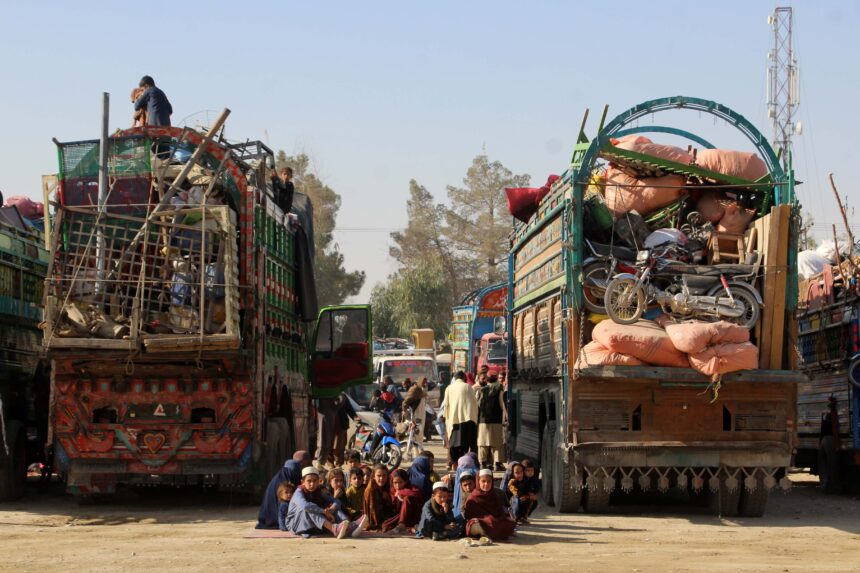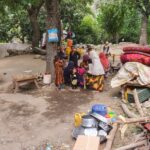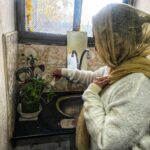At the Islam Qala border crossing, the main transit point between Iran and Afghanistan, long lines of buses idle under the scorching sun, diesel fumes and thick clouds of dust. Afghan deportees and returnees step off the buses, carrying what little they managed to salvage: bundles of clothes wrapped in blankets, a single child’s toy. Women cover their faces, avoiding the gaze of those around them. Toddlers cling quietly to their mothers’ dresses.
It is not a joyful homecoming. These forced migrants are exhausted and stressed, the lives they had built in Iran suddenly over, their future completely uncertain.
Afghans have been at the center of one of the largest and most protracted refugee crises of the century. Poverty, environmental disasters like drought and flooding, civil war in the 1990s followed by the 20-year U.S. war on the country from 2001 — have all contributed. When the Taliban returned to power in 2021, yet another wave of Afghans fled targeted persecution and an economic crisis.
More than 4 million Afghans have returned from Iran and Pakistan since September 2023.
Over the past couple of years, deportations of Afghans from neighboring countries have intensified. The International Organization for Migration reports that more than 4 millionAfghans have returned from Iran and Pakistan since September 2023, including 2.3 millionreturned to Afghanistan so far this year — over half of them deportations. This May, Iran issued an order for all undocumented Afghans to leave the country by July 6. In just two weeks in June, over half a million Afghans were expelled from Iran in what has become one of the largest forced movements of the decade. Neighboring Pakistan has also recently resumed deportations.
Over the past few years, Pakistan’s and Iran’s policies toward immigrants have oscillated between periods of limited tolerance and severe crackdowns. The two countries cite economic strain and border security; Pakistan also mentions “terrorism concerns” — blaming the Afghan government for increased armed attacks within Pakistan. Frontline Defenders, an international human rights organization, describes Pakistan’s actions as “arbitrary mass deportations” that violate human rights, including the principle of non-refoulement.
The high price of deportation
Almost every deportee at the Islam Qala border crossing describes being extorted for large sums of money by Iranian authorities in order to avoid violence or abuse.
“They even took money from 5-year-old children,” Mirwais Qayoumi, who lived in Iran for 26 years, told Truthdig. She was moved through various camps over the past few months while being deported. “Our ID cards mean nothing now. We have nothing in Afghanistan, except hope for work.”
Haseebullah, who asked to just use his first name, was deported multiple times and describes the harsh trip just to get to the border, “I paid 10 million tomans [about $2,400 U.S.] for transport to Mashhad [in northern Iran], but they sent me to another city instead. Then they took another 2 million,” he said.
Those with migration papers were not spared. Abdul Fahim, from Kabul, held documents from UNHCR, the U.N. refugee agency, but was deported in July. “They gave us exit papers and told us to leave Tehran in 15 days. My employer refused to pay me. For five years [while living in Iran], I was treated like a prisoner. On the way back, I had to spend 80 million tomans. Now I have no house, no land, nothing,” he said.
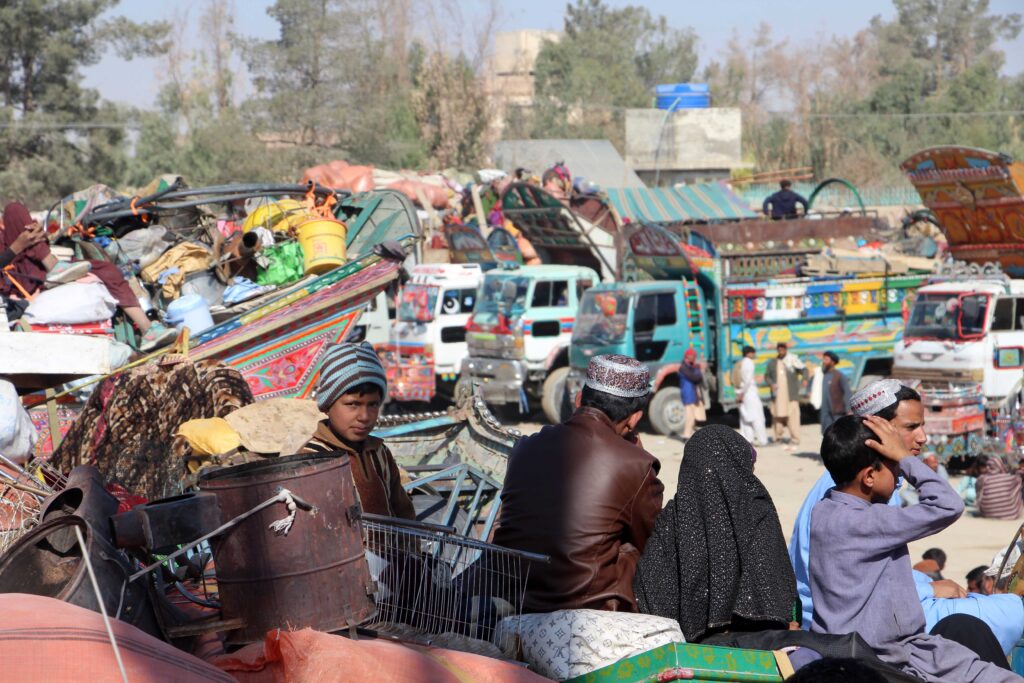
At border reception points, the sense of dislocation is palpable. Families sit under open skies, waiting for transport to the provinces. Children play in the dust while parents queue for aid. Zabiullah Haidari, a local reporter on site, estimated that 20,000 people have passed through daily, lately. “People sit in the sun with their children. The government should provide land or tents.”
Aid agencies provide bread, bottled water and small cash payments — typically about 10,000 Afghanis ($145) — but the assistance is short-term. Many families have nowhere to go once they leave the border area, and they often have to walk long distances from border camps to the provinces. Reports of illness, dehydration and malnutrition are common, particularly among children and the elderly.
Mass deportations have been just as abrupt from Pakistan, and the forced migrants are vulnerable to theft, assault and harsh weather. Kareemullah, deported from Islamabad, told Truthdig, “They didn’t care if you had documents. They took everything and deported us empty-handed. Now in Afghanistan we face poverty, unemployment and insecurity. Our children can’t go to school; many of my family members are depressed.”
Sediqullah, deported abruptly from Pakistan in April and now in Uruzgan, told Truthdig his children still cry from the trauma, “They were beaten. We couldn’t even take their clothes. The journey home was long and hot. We came back to peace, but without work, there is no future.”
Lives unraveled overnight
Many have died during the deportations from illness, malnutrition or accidents in transit. Others have faced impossible hardships. Zakya Nazari from Kunduz, returned from Iran in July with her younger sister, who has leukemia. “We couldn’t move freely. Rent kept rising. All our money went to her treatment. We sold our only home to pay for it,” she said. They had to leave without completing the treatment. “Now we have nothing here.”
Another migrant, Asma, forced to return in July to Rabat Sangi district in Herat, said, “We worked and saved a little, put it toward a house. That money is still there — maybe we’ll never see it again. We have no shelter here. We came back with hope, but without a roof, what can we do?”
“Now we have nothing here.”
Seema Latifi spent 21 years in Tehran before being deported at the end of July. She told Truthdig, “We built our life there, piece by piece. In four months, it was all destroyed.” Her residency papers were abruptly canceled by Iranian authorities. “We left behind our belongings, our house deposit, everything. In the camps, they even took our shoes and belts. People were sent barefoot to Afghanistan.”
She said that even before being deported, the attitude toward Afghans in Iran over the last few years has made life difficult. She described being shoved out of bread lines, denied work and told, “Go back to your own country. You’ve ruined Afghanistan and now you’ve come to ruin ours.” Latifi appealed to Afghan authorities to create jobs, so “no young person will need to go to Iran again.”
Similarly, older deportees described being stripped of decades of social networks, savings and stability. One man, who lived in Mashhad, Iran, for 35 years, recounted how his home was confiscated in July while he was detained in a deportation camp. “It was as if all those years of work and sacrifice vanished in a single night,” he said.
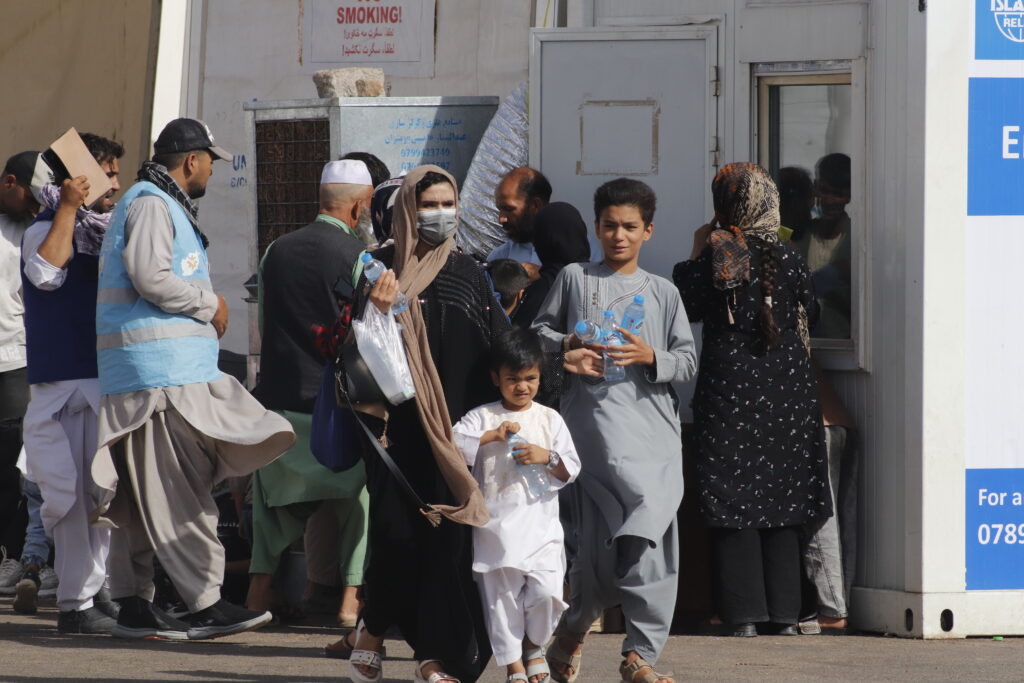
Soraya Mohammadi said her Iranian exile came at the expense of her children’s education. She was forcibly returned to Herat in Afghanistan with her family this year. “I have three children. [In Iran] they wouldn’t let them go to school. They called us ‘Afghan filth.’ They said we destroyed our country. I told them we had come for bread — if we had food in Afghanistan, we would not be here.”
Now, most of her children remain illiterate. “We have peace here, but nothing else — no house, no work. Only one son finished high school,” Mohammadi said, worried about her children’s future. “Even if things improve here, they are already behind. How can they catch up with kids who never left Afghanistan?”
Over 60% of deported children in Afghanistan are out of school, as well as facing psychological trauma and social stigma. Many families cannot afford school fees or uniforms. The Taliban allows girls to attend school up to grade six, but even primary school attendance has dropped due to social pressure and restrictions on female teachers.
Structural crisis
A collapsed economy and international sanctions make reintegration extremely difficult for returnees, and humanitarian officials warn that Afghanistan’s absorption capacity is stretched beyond breaking point. Prior to 2021, aid made up 75% of the national budget. Today, only 12% of Afghanistan’s required aid is currently funded, according to the U.N. Office for the Coordination of Humanitarian Affairs. U.S. aid cuts and Taliban interference have led to health facility closures and limited food assistance, with the U.N. estimating that 75% of the population now lives in extreme poverty.
“You can’t reintegrate people when there are no jobs, no housing, and the education system is collapsing,” said a Kabul-based aid coordinator who asked to remain anonymous. “This is not an emergency lasting a few weeks. It’s a structural crisis.”
“Returnees are not a temporary problem.”
At Islam Qala, buses continue to arrive. Each carries another load of people pushed out of one country into another that cannot yet support them. The roads may be different, but for many Afghans, they all lead back to the same starting point: a fragile homecoming and a question mark for the future.
Despite the hardships, Afghan returnees demonstrate resilience. Communities organize informal schooling, shared kitchens and local job networks. Women form cooperative groups to support each other financially and emotionally.
An Afghan aid worker who requested anonymity told Truthdig that without regional cooperation, increased international aid and sustainable reintegration programs, Afghanistan will continue to see cycles of migration, deportation and poverty.
“Returnees are not a temporary problem,” the aid worker said. “They are part of Afghanistan’s future — if we do not support them now, the crisis will worsen, and the human cost will increase.”
“People think when you come home, it means safety,” Latifi, the deportee who had lived in Iran for 21 years, concluded. “But without the means to live, you just think about leaving again.”


